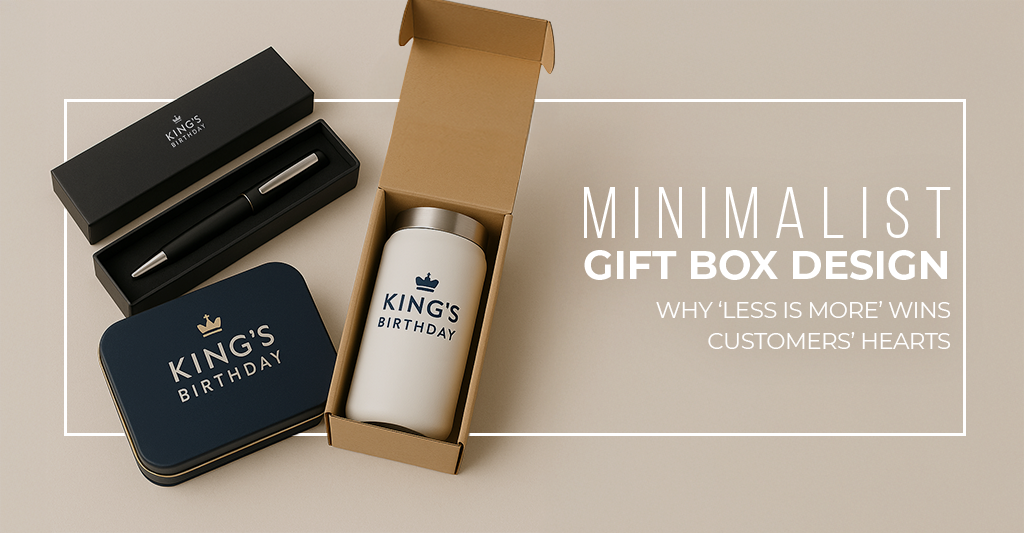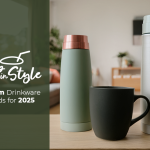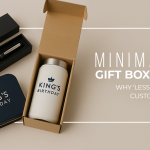
Welcome to VMA Promotional Products Store
Welcome to VMA Promotional Products Store

Packaging plays a crucial role in shaping purchasing decisions. Amidst the sea of flashy, over-designed gift boxes, minimalist packaging stands out—not because it shouts the loudest, but because it speaks the clearest. The philosophy of “less is more” isn’t just an aesthetic choice; it’s a strategic one that aligns with modern consumer preferences, sustainability demands, and brand trust.
For businesses in Australia, where consumers are increasingly discerning about design and environmental impact, minimalist gift boxes offer a powerful way to enhance brand perception, improve customer experience, and even boost sales. But what exactly makes minimalist design so effective? And how can brands implement it successfully?
This deep dive explores the psychology behind minimalist packaging, its tangible business benefits, and actionable strategies for Australian brands looking to adopt this trend.
The human brain processes visual information quickly, and cluttered packaging can overwhelm potential buyers. Studies in consumer psychology, including research from The Journal of Marketing, indicate that shoppers are more likely to engage with packaging that is simple, intuitive, and easy to understand.
Real-World Example: Muji Australia has built a loyal following by stripping away unnecessary branding. Their gift boxes use muted colours, clean typography, and functional designs—letting the product speak for itself.
Why It Matters for Businesses: If your packaging is too busy, customers may struggle to identify the product or brand message. Minimalism removes friction in the buying process.
Luxury brands have long understood that simplicity conveys exclusivity. When a gift box isn’t cluttered with excessive graphics or text, the focus shifts to craftsmanship and material quality.
Data Point: According to Packaging Digest, 60% of consumers are willing to pay up to 15% more for products in minimalist packaging because it feels more high-end.
Australian Case Study: Haigh’s Chocolates uses matte-finish, monochrome gift boxes with subtle embossing. This approach reinforces their premium positioning without needing flashy embellishments.

Practical Takeaway: If your brand wants to move into a higher price bracket, minimalist packaging can help justify the cost in the consumer’s mind.
Sustainability is no longer a niche concern—it’s a mainstream expectation. Australians are increasingly conscious of waste, with 80% of consumers saying they prefer brands that use recyclable or minimal packaging.
Industry Trend: The Australian Packaging Covenant Organisation (APCO) has set a 2025 target for 100% of packaging to be reusable, recyclable, or compostable. Brands that adopt minimalist designs (which often use fewer materials) are ahead of the curve.
Consumer Behaviour: A 2024 Nielsen report found that 73% of Australians would switch to a brand with more sustainable packaging, even if it costs slightly more.
Brand Example: KeepCup, an Australian reusable coffee cup brand, uses minimalist, recyclable packaging that aligns with their eco-friendly mission.
Too many colours can make packaging look cheap or chaotic. Minimalist designs often rely on neutral tones (white, black, soft greys) or a single bold accent colour for contrast.
Why It Works: A restrained colour scheme creates visual harmony and makes branding elements (like logos) stand out more
Pro Tip: Use Pantone’s annual Colour of the Year to stay on-trend while keeping the palette simple.
Australian Example: Aesop uses a consistent, muted colour scheme across all packaging, reinforcing their sophisticated brand identity.

Instead of cramming in illustrations or photos, minimalist packaging lets typography take centre stage. A well-chosen font can convey elegance, playfulness, or luxury—depending on the brand’s tone.
Best Practices:
Brand Example: Koko Black uses elegant gold foil typography on dark gift boxes, creating a luxurious feel without clutter.

Minimalism isn’t just about visuals—it’s also about usability. Overly complex packaging (with unnecessary folds, inserts, or compartments) can frustrate customers.
What to Aim For:
Supplier Suggestion: Brands like VMA Promotional Products offer sleek, no-fuss gift boxes that balance aesthetics and functionality.

A common mistake is over-branding—plastering logos, slogans, and contact details all over the packaging. Minimalist design favours subtlety.
Effective Approaches:
Stat to Consider: – Nielsen Global Premiumization Report (December 2016) – optimised package designs can boost forecasted sales by 5.5%, with visual cues such as simple or uncluttered branding signalling premium quality.
Shoppers typically spend just 3 seconds looking at packaging before deciding whether to engage further. Minimalist designs help them:
Unboxing has become a key moment in customer experience—especially in the age of social media. Minimalist packaging:
Minimalist designs are more adaptable for:
1. Adora Handmade Chocolates
Uses matte black boxes with gold foil lettering. The minimalist approach reinforces their handcrafted, premium positioning.
2. T2 Tea
While their tea tins are colourful, their gift boxes use clean lines and muted tones to balance vibrancy with sophistication.
3. Incu’s Gift Packaging
The fashion retailer uses plain, high-quality boxes with a small branded sticker—letting the clothing inside be the hero.
Survey customers: “What packaging do you find most appealing?”
Analyse competitors (e.g., David Jones’ gift packaging).
Choose manufacturers like VMA Promotional Products for high-quality, minimalist-friendly options.
Run A/B tests comparing minimalist vs. traditional packaging in select stores.
Minimalist gift box design isn’t just a passing trend—it’s a reflection of how modern consumers think. Australians, in particular, value clarity, sustainability, and understated elegance in packaging. By adopting a “less is more” approach, brands can:
For businesses ready to explore minimalist packaging, suppliers like VMA Promotional Products offer sleek, customisable solutions that fit this aesthetic. In a crowded market, sometimes the quietest packaging makes the loudest statement.
Here is where you can find the latest news and products plus tips and ideas that will assist you in keeping up to date or simply making a more informed decision about what products will suit your customers the best…




